


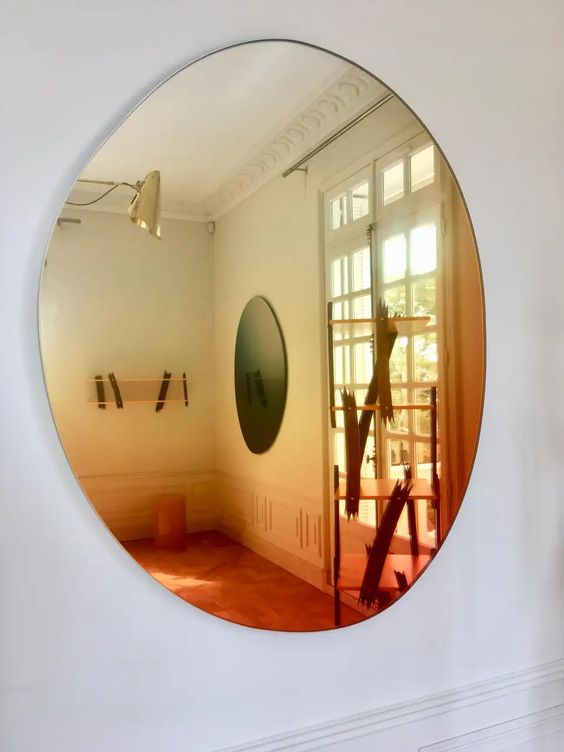
"The Gradient Mirage"
Imagine a luminous room, its walls graced by an irregular mirror that whispers tales of gold and orange gradients, infusing a serene, warm ambiance amidst the starkness of white. This acrylic mirror transceds mere function as a piece of home decor; it stands as a fluid work of art. Its lustrous reflections brighten every corner, while the gentle color transitions soften spatial boundaries, expanding the sense of visual space.
Before such a mirror, one easily engages in a silent dialogue, an immersive exchange with art itself, lending an experience that resonates with both sight and soul.
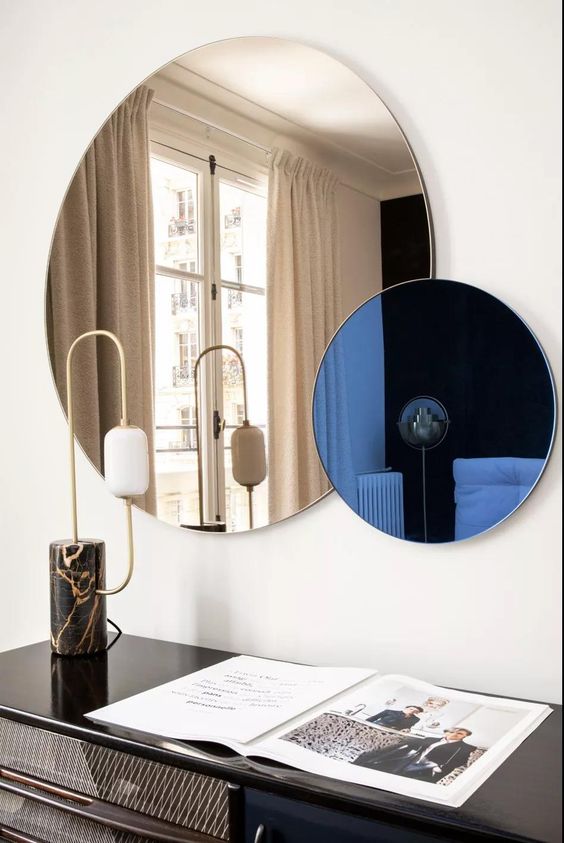
"Lamination and Coating Craft"
The artistry behind this mirror represents the cutting edge of acrylic technology—the lamination process. This technique allows designers to layer multiple acrylic sheets with varied hues precisely, giving rise to rich visual depth and unparalleled complexity. The gradient hues are not mere surface coatings but are intricately embedded within the material, each layer narrating its own color story.
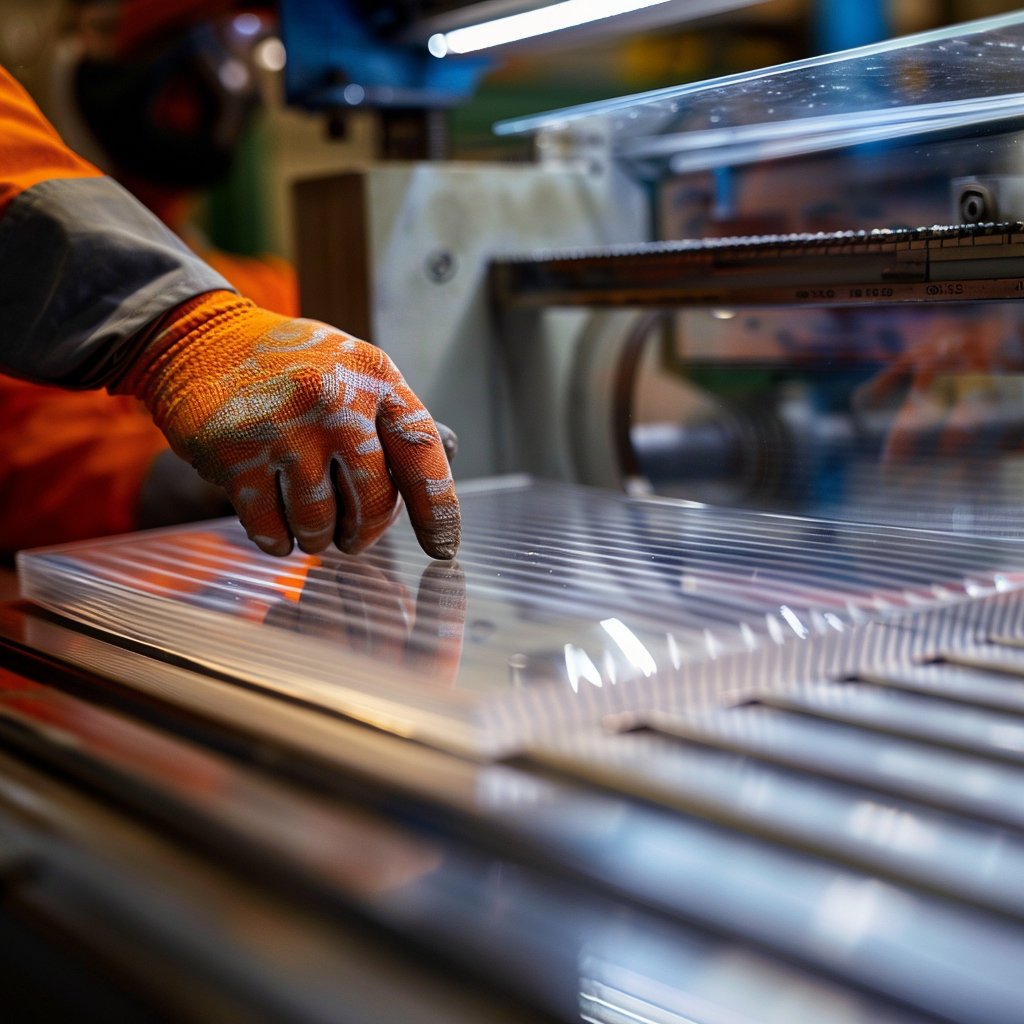
In contrast, the coating process offers an alternative aspect. Coatings yield a uniform and refined color coverage on the acrylic surface, bestowing the mirror with a different kind of smooth texture and sheen. This technology goes beyond aesthetics, incorporating practical features like UV protection and scratch resistance, catering to the diverse needs of modern living.
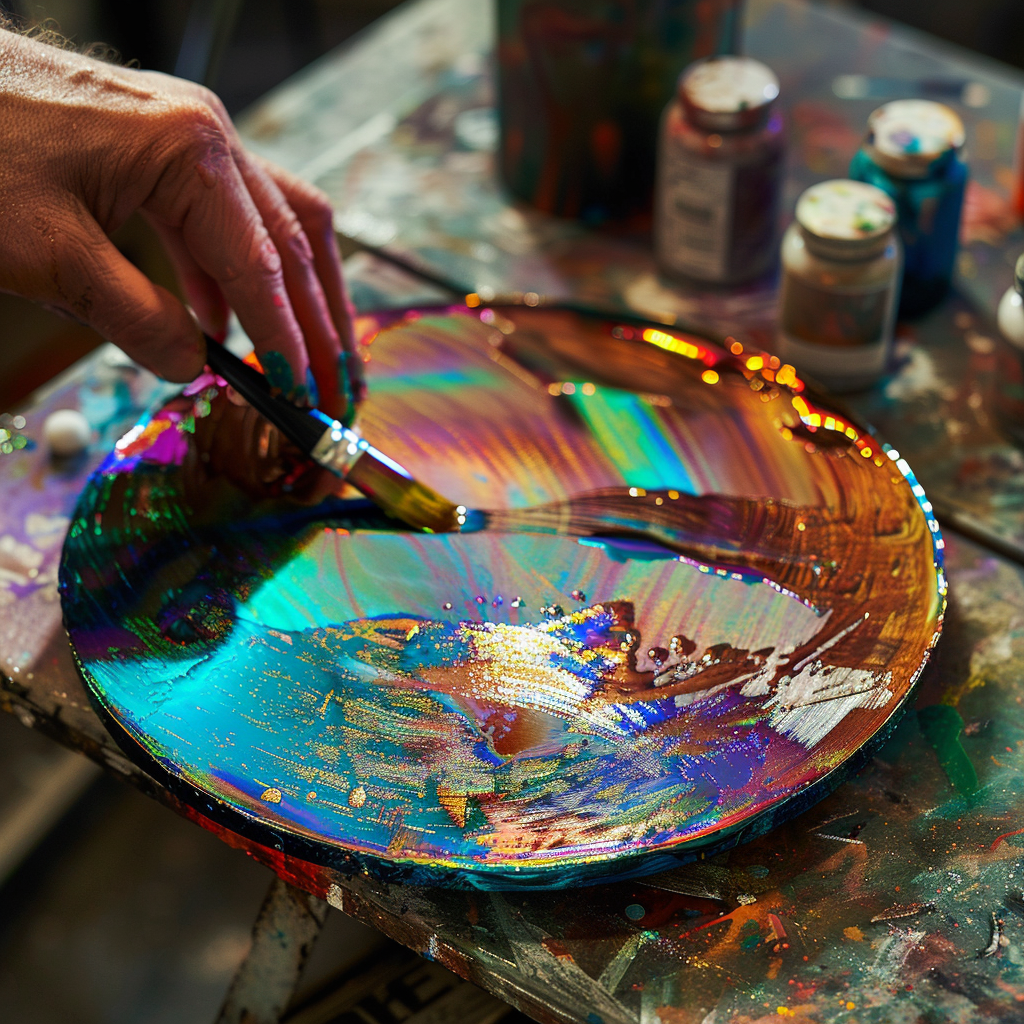
"Comparing Acrylic and Traditional Glass Mirrors"
When juxtaposed with traditional glass mirrors, acrylic mirrors showcase unique advantages, albeit with some limitations.
Weight and Impact Resistance:
A significant upside of acrylic mirrors is their lightweight nature, easing the burden of transport and installation. The material's high impact resistance signifies less likelihood of shattering upon collisions, ensuring enhanced safety. However, a downside is that acrylic surfaces are more prone to scratches compared to glass, especially without proper coating protection.
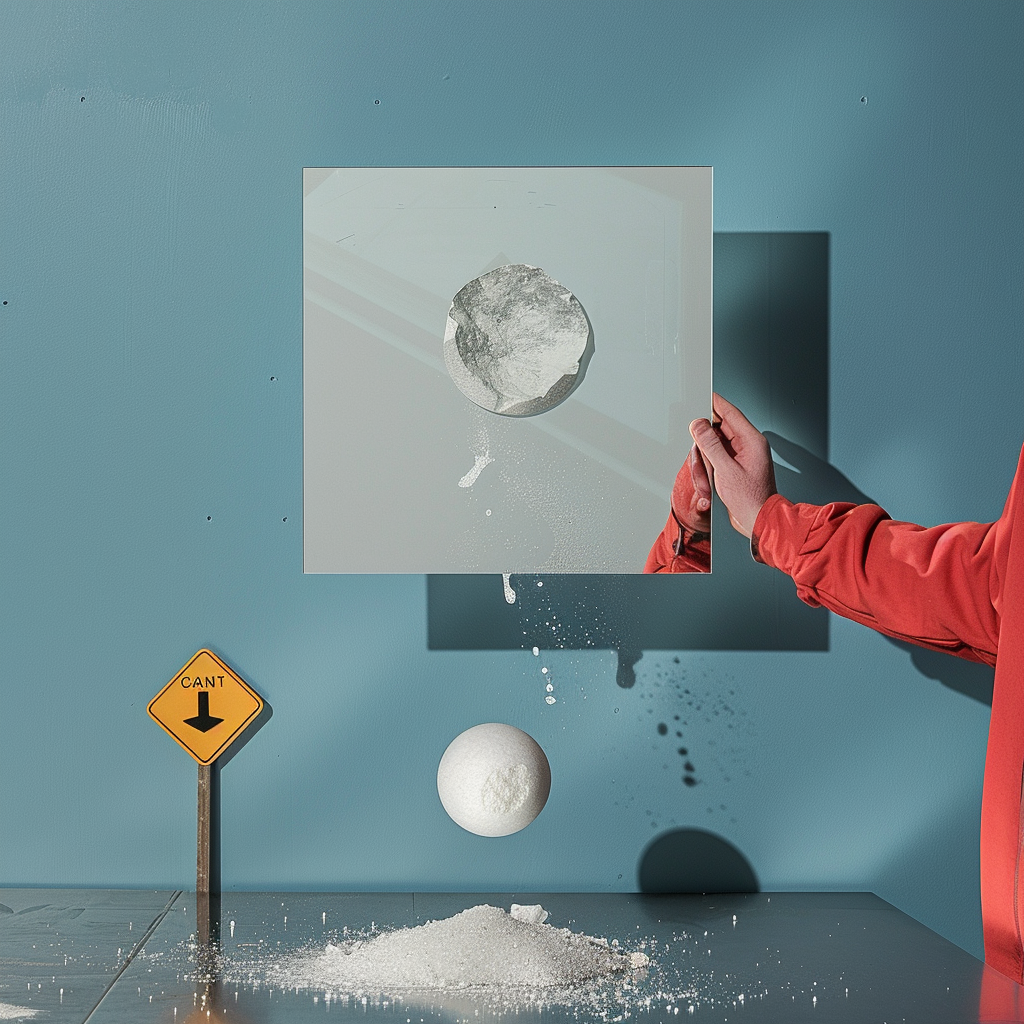
Customization and Aesthetics:
Acrylic's malleability grants designers the freedom to tailor shapes and sizes to spatial requirements. Aesthetically, acrylic mirrors can achieve a spectrum of colors and textures difficult to attain with glass. Yet, one drawback is that prolonged exposure to intense sunlight may lead to color fading or material degradation in acrylic mirrors.
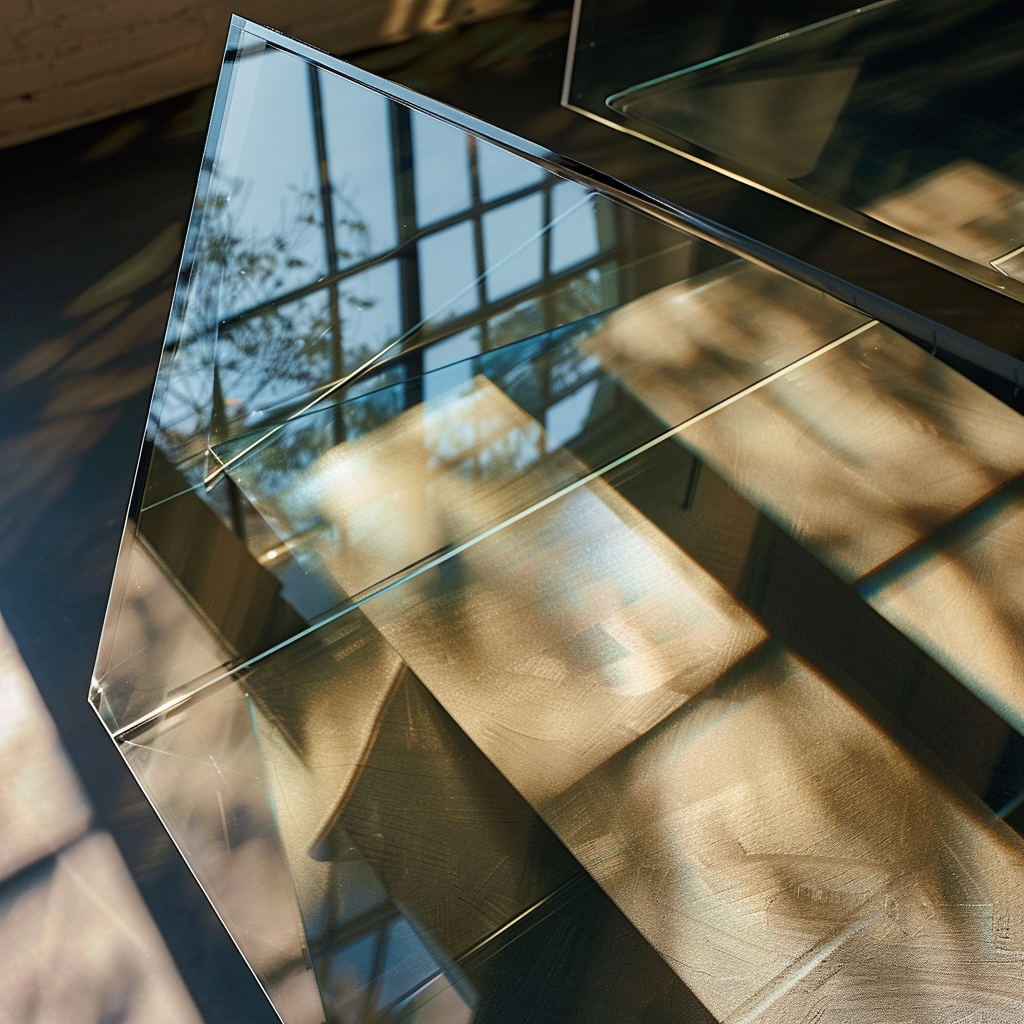
Environmental Impact and Sustainability:
The recyclability of acrylic material is a nod to its environmental advantage, aligning with the trend of sustainable development. While the production of acrylic may involve certain chemicals, its longevity and recyclability reduce its overall environmental footprint. However, the higher energy consumption and initial manufacturing costs of acrylic, as opposed to traditional glass, can be seen as both an ecological and economic downside.
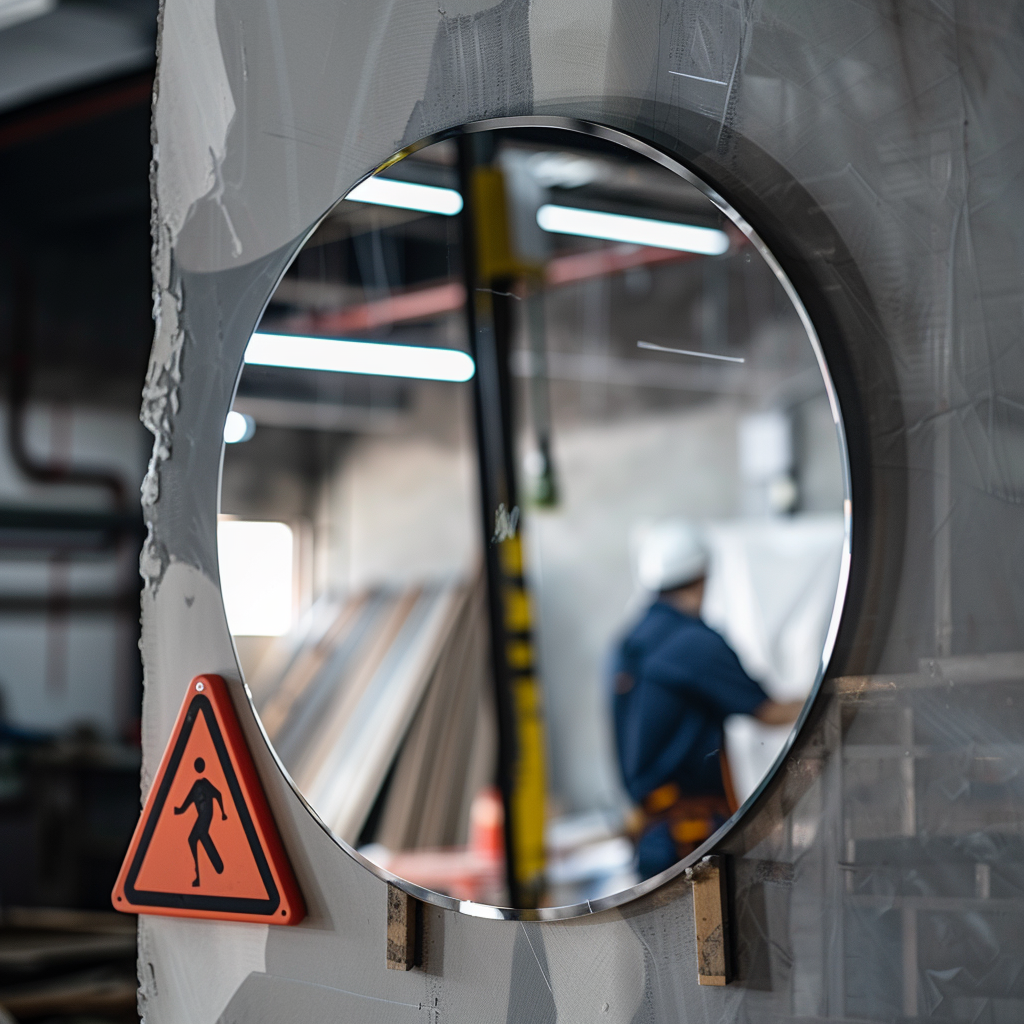
Tel: +86-755-89501177
Mobile: +86-15994777776
E-mail: sales15@acrylchina.com
Fax: 86-755-89501177

